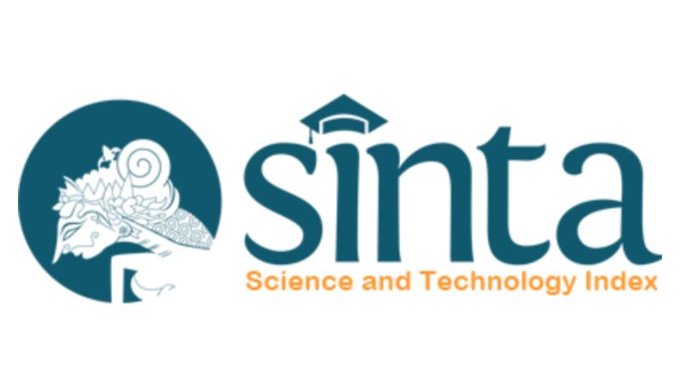Manajemen Komprehensif Sepsis Akibat Infeksi Saluran Kemih pada Kehamilan
DOI:
https://doi.org/10.55175/cdk.v50i6.919Keywords:
Dokter umum, infeksi saluran kemih, kehamilan, manajemen, urosepsisAbstract
Ibu hamil rentan mengalami infeksi yang berujung sepsis akibat perubahan fisiologis signifikan berbagai sistem organ. Penyebab sepsis dalam kehamilan tersering bersumber dari saluran kemih, yang disebut urosepsis dengan tingkat mortalitas mencapai 20%–42%. Selain mengancam ibu hamil, sepsis juga berpotensi mengancam kesejahteraan janin. Oleh karena itu, diagnosis dan manajemen sepsis secara dini pada kehamilan sangatlah penting untuk mencegah morbiditas dan mortalitas janin dan ibu. Namun, panduan penatalaksanaan komprehensif sepsis pada kehamilan masih terbatas dan terpencar, sehingga membuat sulit dipahami. Tinjauan pustaka ini dibuat melalui penulusuran bukti ilmiah secara holistik untuk memberikan pemahaman mengenai konsep dasar urosepsis. Aspek diagnosis dan manajemen dirangkum secara komprehensif melalui ilustrasi dan algoritma yang mudah dipahami disertai dengan sistem skoring berkaitan dengan diagnosis dan pilihan terapi farmakologi untuk menangani urosepsis.
Pregnant women are susceptible to infections that lead to sepsis due to significant physiological changes in various organ systems. The most common cause of infection in sepsis in pregnancy comes from the urinary tract, called urosepsis, with a mortality rate of 20%–42%. Sepsis also has the potential to endanger the fetus. This issue indicates that early diagnosis and management of sepsis in pregnancy is crucial to prevent fetal and maternal morbidity and mortality. Nonetheless, comprehensive guidelines for managing sepsis in pregnancy are still limited and scattered, making them difficult to understand. This literature review was created through a holistic appraisal of scientific evidence to understand the basic concepts of urosepsis. Aspects of diagnosis and management were summarised through illustrations and algorithms accompanied by scoring system related to diagnosis and pharmacological therapy.
Downloads
References
Porat A, Bhutta BS, Kesler S. Urosepsis. In Treasure Island (FL); 2022.
Rao M, G U, Kaur P, Manvikar S, P J. A rare case of urosepsis in pregnancy. J Med Sci Res. 2016;4(2):90–3.
Bauer M, Gerlach H, Vogelmann T, Preissing F, Stiefel J, Adam D. Mortality in sepsis and septic shock in Europe, North America and Australia between 2009 and 2019— Results from a systematic review and meta-analysis. Crit Care. 2020;24(1):239.
Bridwell RE, Carius BM, Long B, Oliver JJ, Schmitz G. Sepsis in pregnancy: Recognition and resuscitation. West J Emerg Med. 2019;20(5):822–32.
Cordioli RL, Cordioli E, Negrini R, Silva E. Sepsis and pregnancy: Do we know how to treat this situation? Rev Bras Ter intensiva. 2013;25(4):334–44.
Joseph J, Sinha A, Paech M, Walters BNJ. Sepsis in pregnancy and early goal-directed therapy. Obstet Med. 2009/09/01. 2009;2(3):93–9.
Kourtis AP, Read JS, Jamieson DJ. Pregnancy and infection. N Engl J Med. 2014;370(23):2211–8.
Habak PJ, Robert P. Griggs J. Urinary tract infection in pregnancy. StatPearls [Internet]. 2021. Available from: https://www.ncbi.nlm.nih.gov/books/ NBK537047/#:~:text=UTIs%20are%20a%20common%20cause,%2C%20young%20age%2C%20and%20nulliparity.
Adam R, Hannah D, Tove MG, Samuel NF. Septic shock from pyelonephritis in pregnancy. Clin Med Rev Case Reports. 2020;7(5):7–9.
Wing DA, Fassett MJ, Getahun D. Acute pyelonephritis in pregnancy: An 18-year retrospective analysis. Am J Obstet Gynecol. 2014;210(3):219.e1-6.
Gazmararian JA, Petersen R, Jamieson DJ, Schild L, Adams MM, Deshpande AD, et al. Hospitalizations during pregnancy among managed care enrollees. Obstet Gynecol. 2002;100(1):94–100.
Gilstrap LC 3rd, Ramin SM. Urinary tract infections during pregnancy. Obstet Gynecol Clin North Am. 2001;28(3):581–91.
Colgan R, Nicolle LE, McGlone A, Hooton TM. Asymptomatic bacteriuria in adults. Am Fam Physician. 2006;74(6):985–90.
Colgan R, Williams M, Johnson JR. Diagnosis and treatment of acute pyelonephritis in women. Am Fam Physician. 2011;84(5):519–26.
Simerville JA, Maxted WC, Pahira JL. Urinalysis: A comprehensive review. Am Fam Physician. 2005;71(6):1153–62.
Dreger NM, Degener S, Ahmad-Nejad P, Wöbker G, Roth S. Urosepsis--Etiology, diagnosis, and treatment. Dtsch Arztebl Int. 2015;112(49):837–48.
Arafeh JMR, Dwyer BK. South Australian perinatal practice guideline: Sepsis in pregnancy. Dep Heal Wellbeing, Gov South Aust. 2012;1–22.
ESICM and SCCM. European Society of Intensive Care Medicine and Society of Critical Care Medicine. 2021 recommendations: Surviving sepsis campaign [Internet]. 2021. Available from: https://www.esicm.org/wp-content/uploads/2021/10/SSC-Adult-Guidelines-Update.pdf
Cho WH. Update of sepsis: Recent evidences about early goal directed therapy. Tuberc Respir Dis (Seoul). 2015;78(3):156–60.
Royal College of Obstetricians and Gynaecologists (RCOG). Sepsis in pregnancy, bacterial (Green-top Guideline No. 64a). 2012.
Royal College of Obstetricians and Gynaecologists (RCOG). Sepsis following Pregnancy, Bacterial (Green-top Guideline No. 64b). 2012.
Greer O, Shah NM, Johnson MR. Maternal sepsis update: Current management and controversies. Obstet Gynaecol. 2020;22(1):45–55.
Rhodes A, Evans LE, Alhazzani W, Levy MM, Antonelli M, Ferrer R, et al. Surviving sepsis campaign: International guidelines for management of sepsis and septic shock: 2016. Intensive Care Med. 2017;43(3):304–77.
Fan SR, Liu P, Yan SM, Huang L, Liu XP. New concept and management for sepsis in pregnancy and the puerperium. Matern Med. 2020;2(4):231–9.
Evans L, Rhodes A, Alhazzani W, Antonelli M, Coopersmith CM, French C, et al. Surviving sepsis campaign: International guidelines for management of sepsis and septic shock 2021. Intensive Care Med. 2021;47(11):1181-247.
Redhono D. Update management of sepsis. Surviving Sepsis Campaign; 2016. 1–41 p.
Gadrey SM, Lau CE, Clay R, Rhodes GT, Lake DE, Moore CC, et al. Imputation of partial pressures of arterial oxygen using oximetry and its impact on sepsis diagnosis. Physiol Meas. 2019;40(11):115008.
Grissom CK, Brown SM, Kuttler KG, Boltax JP, Jones J, Jephson AR, et al. A modified sequential organ failure assessment score for critical care triage. Disaster Med Public Health Prep. 2010;4(4):277–84.
Albright CM, Has P, Rouse DJ, Hughes BL. Internal vialidation of the sepsis in obstetrics score to dentify risk of morbidity from sepsis in pregnancy. Obstet Gynecol. 2017;130(4):747–55.
Albright CM, Ali TN, Lopes V, Rouse DJ, Anderson BL. The sepsis in obstetrics score: A model to identify risk of morbidity from sepsis in pregnancy. Am J Obstet Gynecol. 2014;211(1):39.e1-8.
Wu S, Yao X, Zhou X, Wu F. 3-hour bundle is good, but 1-hour bundle may be better. Am J Infect Control. 2018;46(11):1317–8.
Dellinger RP, Hussain S. From Barcelona to New York: 15 years of transition of sepsis performance improvement. J Thorac Dis. 2017;9(10):3453–5.
Elsayed AA, Elhamid Ahmed RA, Beshey BN. Early goal directed therapy versus a protocolized resuscitation care in early management of septic shock. Egypt J Anaesth. 2022;38(1):58–63.
Schmidt GA, Mandel J. Evaluation and management of suspected sepsis and septic shock in adults. UpToDate [Internet]. 2022 [cited 2022 Oct 1]. Available from: https://www.uptodate.com/contents/evaluation-and-management-of-suspected-sepsis-and-septic-shock-in-adults/print
Yealy DM, Kellum JA, Huang DT, Barnato AE, Weissfeld LA, Pike F, et al. A randomized trial of protocol-based care for early septic shock. N Engl J Med. 2014;370(18):1683–93.
Peake SL, Delaney A, Bailey M, Bellomo R, Cameron PA, Cooper DJ, et al. Goal-directed resuscitation for patients with early septic shock. N Engl J Med. 2014;371(16):1496–506.
Mouncey PR, Osborn TM, Power GS, Harrison DA, Sadique MZ, Grieve RD, et al. Trial of early, goal-directed resuscitation for septic shock. N Engl J Med. 2015;372(14):1301–11.
Andrews B, Semler MW, Muchemwa L, Kelly P, Lakhi S, Heimburger DC, et al. Effect of an early resuscitation protocol on in-hospital mortality among adults with sepsis and hypotension: A randomized clinical trial. JAMA. 2017;318(13):1233–40.
Seymour CW, Gesten F, Prescott HC, Friedrich ME, Iwashyna TJ, Phillips GS, et al. Time to treatment and mortality during mandated emergency care
for sepsis. N Engl J Med. 2017;376(23):2235–44.
Levy MM, Evans LE, Rhodes A. The surviving sepsis campaign bundle: 2018 update. Intensive Care Med. 2018;44(6):925–8.
Venkatesh B, Schlapbach L, Mason D, Wilks K, Seaton R, Lister P, et al. Impact of 1-hour and 3-hour sepsis time bundles on patient outcomes and antimicrobial use: A before and after cohort study. Lancet Reg Health West Pac. 2021;18:100305.
Mittal P, Wing DA. Urinary tract infections in pregnancy. Clin Perinatol. 2005;32(3):749–64.
Rochwerg B, Alhazzani W, Gibson A, Ribic CM, Sindi A, Heels-Ansdell D, et al. Fluid type and the use of renal replacement therapy in sepsis: a systematic review and network meta-analysis. Intensive Care Med. 2015;41(9):1561–71.
Rochwerg B, Alhazzani W, Sindi A, Heels-Ansdell D, Thabane L, Fox-Robichaud A, et al. Fluid resuscitation in sepsis: A systematic review and network meta-analysis. Ann Intern Med. 2014;161(5):347–55.
Patel A, Laffan MA, Waheed U, Brett SJ. Randomised trials of human albumin for adults with sepsis: Systematic review and meta-analysis with trial sequential analysis of all-cause mortality. BMJ. 2014;349:4561.
Xu JY, Chen QH, Xie JF, Pan C, Liu SQ, Huang LW, et al. Comparison of the effects of albumin and crystalloid on mortality in adult patients with severe sepsis and septic shock: A meta-analysis of randomized clinical trials. Crit Care. 2014;18(6):702.
Jiang L, Jiang S, Zhang M, Zheng Z, Ma Y. Albumin versus other fluids for fluid resuscitation in patients with sepsis: A meta-analysis. PLoS One. 2014;9(12):e114666.
Asfar P, Schortgen F, Boisramé-Helms J, Charpentier J, Guérot E, Megarbane B, et al. Hyperoxia and hypertonic saline in patients with septic shock (HYPERS2S): A two-by-two factorial, multicentre, randomised, clinical trial. Lancet Respir Med. 2017;5(3):180–90.
Mui E, Meng L, Kuo J, Kwong D, Epstein D. Stanford health care aminoglycoside dosing guideline. Stanford: Stanford Antimicrobial Safety & Sustainability Program; 2021. 1–11 p.
Wing DA. Pyelonephritis in pregnancy. Drugs 2001;61(14):2087–96.
Sheffield JS, Cunningham FG. Urinary tract infection in women. Obstet Gynecol. 2005;106(5 Pt 1):1085–92.
No authors listed. Committee Opinion No. 717: Sulfonamides, nitrofurantoin, and risk of birth defects. Obstet Gynecol. 2017;130(3):150–2.
Crofts J, Obs S, St G. Women & children’s health maternity guideline. NHS. 2021.
SHARP Healthcare. Updated SHARP healthcare treatment recommendations in UTI & pyelonephritis in pregnancy. 2021.
Shi R, Hamzaoui O, De Vita N, Monnet X, Teboul JL. Vasopressors in septic shock: Which, when, and how much? Ann Transl Med. 2020;8(12):794.
Vincent JL, Romal A, Khan RJ. Dobutamine administration in septic shock. Crit Care Med. 1990;18(7):689–93.
Rahman H, Renjhen P, Dutta S, Kar S. Admission cardiotocography: Its role in predicting foetal outcome in high-risk obstetric patients. Australas Med J. 2012;5(10):522–7.
American College of Obstetricians and Gynecologists (ACOG). Committee opinion No. 713: Antenatal corticosteroid therapy for fetal maturation. Obstet Gynecol. 2017;130(2):102–9.
van Nieuwkoop C, Bonten TN, van’t Wout JW, Kuijper EJ, Groeneveld GH, Becker MJ, et al. Procalcitonin reflects bacteremia and bacterial load in urosepsis syndrome: A prospective observational study. Crit Care. 2010;14(6):206.
Tan M, Lu Y, Jiang H, Zhang L. The diagnostic accuracy of procalcitonin and C-reactive protein for sepsis: A systematic review and meta-analysis. J Cell Biochem. 2019;120(4):5852–9.
Cui N, Zhang H, Chen Z, Yu Z. Prognostic significance of PCT and CRP evaluation for adult ICU patients with sepsis and septic shock: Retrospective analysis of 59 cases. J Int Med Res. 2019;47(4):1573–9.
Ryoo SM, Han KS, Ahn S, Shin TG, Hwang SY, Chung SP, et al. The usefulness of C-reactive protein and procalcitonin to predict prognosis in septic shock patients: A multicenter prospective registry-based observational study. Sci Rep. 2019;9(1):6579.
Ryu JA, Yang JH, Lee D, Park CM, Suh GY, Jeon K, et al. Clinical usefulness of procalcitonin and C-reactive protein as outcome predictors in critically ill patients with severe sepsis and septic shock. PLoS One. 2015;10(9):e0138150.
Downloads
Published
How to Cite
Issue
Section
License
Copyright (c) 2023 Cermin Dunia Kedokteran

This work is licensed under a Creative Commons Attribution-NonCommercial 4.0 International License.





















